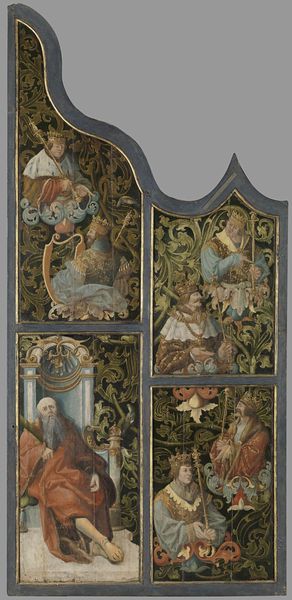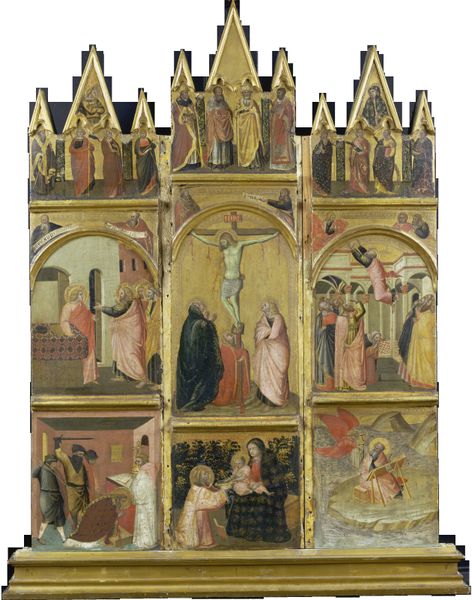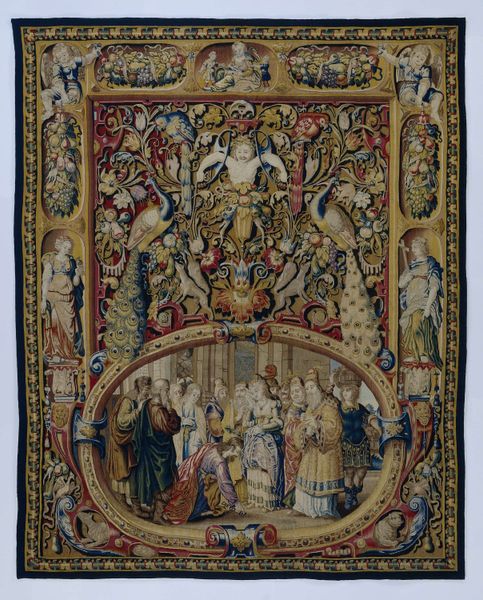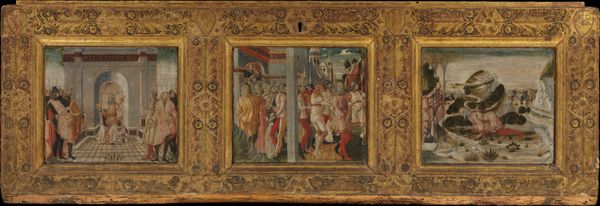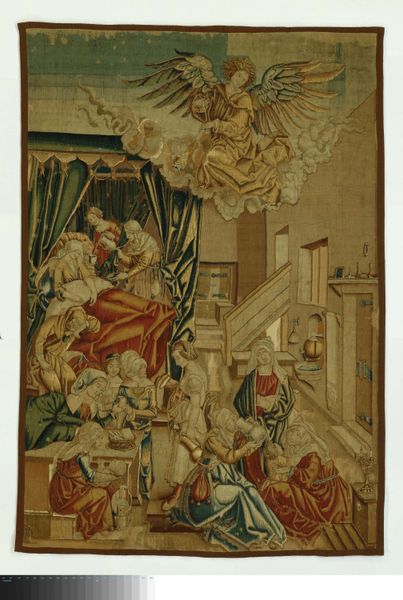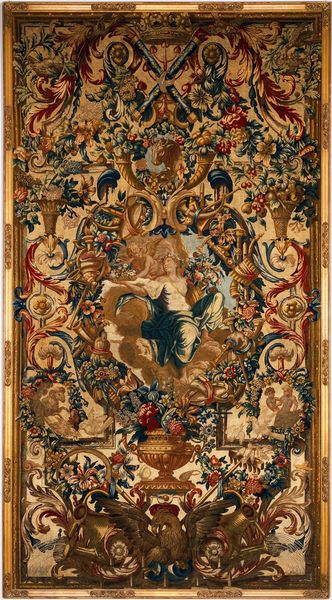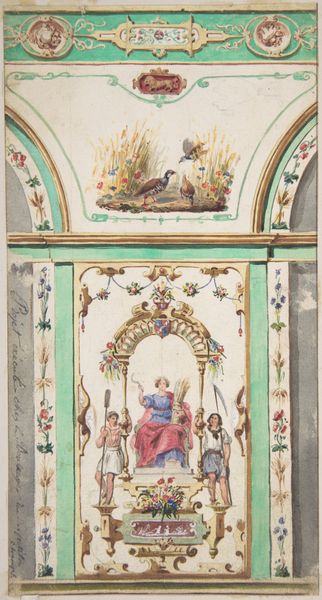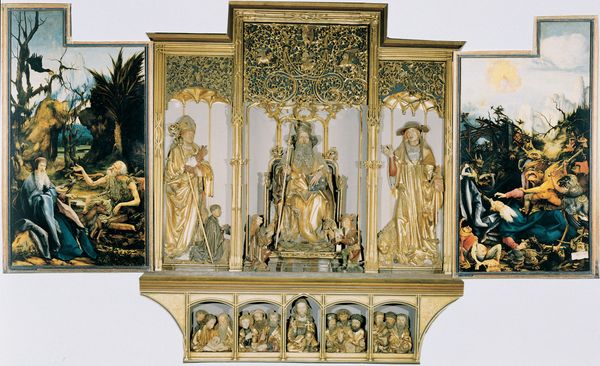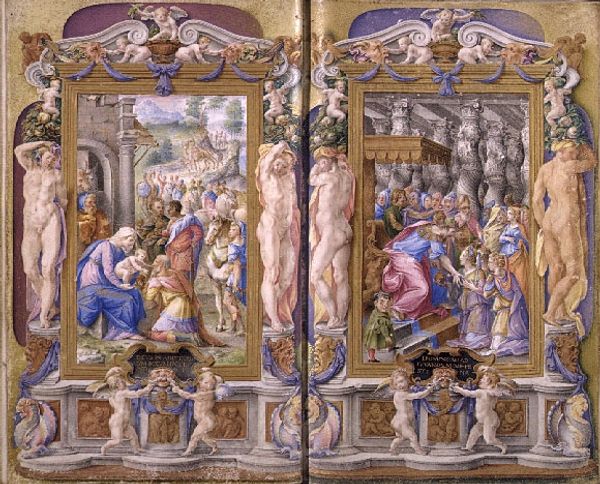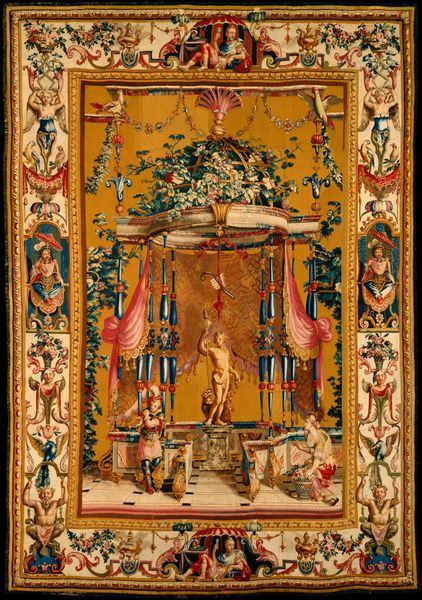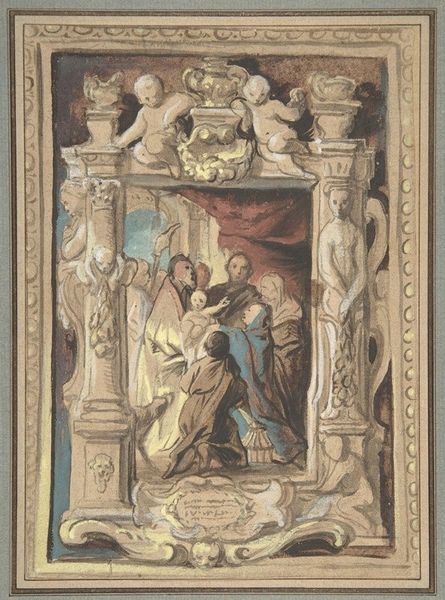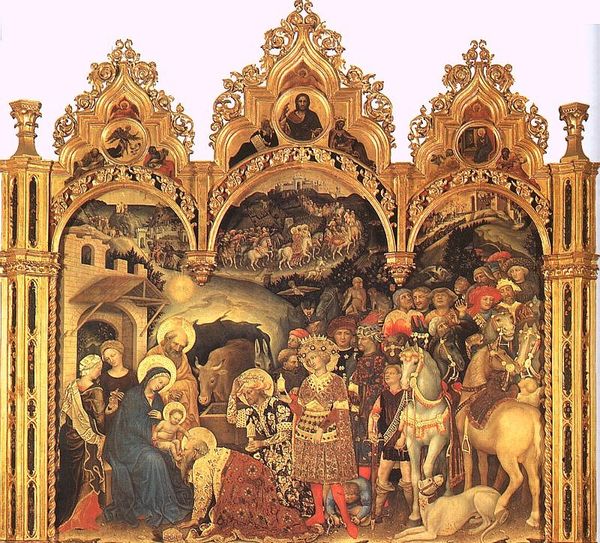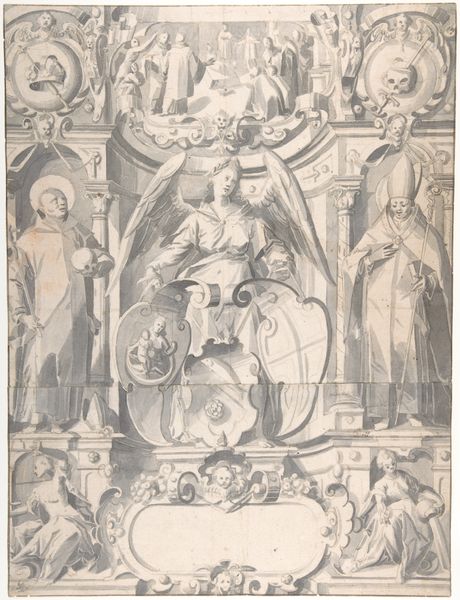
Left door of the organ from the Dutch Reformed Church in Scheemda c. 1526
0:00
0:00
panel, painting, wood
#
portrait
#
medieval
#
panel
#
painting
#
sculpture
#
figuration
#
wood
#
northern-renaissance
Dimensions: height 293 cm, width 140 cm, thickness 7.5 cm
Copyright: Rijks Museum: Open Domain
Curator: Looking at this piece, the density of detail is what strikes me first. It almost feels overloaded with symbolism. Editor: This is actually the left door of an organ, dating back to around 1526. It comes from the Dutch Reformed Church in Scheemda. Painted on wood, it likely served a dual purpose: functional, closing off the organ pipes, and didactic, presenting biblical figures. Curator: A musical instrument transformed into a canvas for theological messaging—a very strategic appropriation of space, I must say. Were these panels always viewed as ‘art,’ or was that status acquired over time as secular institutions like museums embraced them? Editor: Initially, its power lay in its immediate function within the church, dictating and shaping religious experience. Now, situated in the Rijksmuseum, its power has shifted, its value refracted through a contemporary lens of connoisseurship and historical importance. Curator: It's interesting how this shift repositions the viewer as well. Are we invited to admire religious dogma, or appreciate painterly technique, or critique the politics of representation inherent to images of power? Look at all these figures—are they merely saints, or do they uphold a patriarchal religious structure that marginalized many? Editor: That’s a key tension in approaching this work. The rigid hierarchy within the painting itself reflects the societal structures of the time. While it’s a masterpiece of Northern Renaissance art, depicting figures with intricate detail and vivid color, it also represents a worldview steeped in specific power dynamics. Curator: This contrast demands we engage critically with the visual rhetoric, unearthing the socio-political subtexts intertwined within its beauty. And considering its display within the Rijksmuseum, what responsibility does the institution bear in framing these discussions for a 21st-century audience? Editor: Precisely! Thinking about the accessibility of these discussions becomes very crucial. In what ways could museums act as mediators to spark dialogues between artwork, its historical context and current, pluralistic values? Curator: Considering all these perspectives helps me to view it with a fresh understanding. It transforms my interpretation completely! Editor: Absolutely. It is a deeply important aspect to examine the role of this work of art across a broad historical and current scope.
Comments
No comments
Be the first to comment and join the conversation on the ultimate creative platform.
